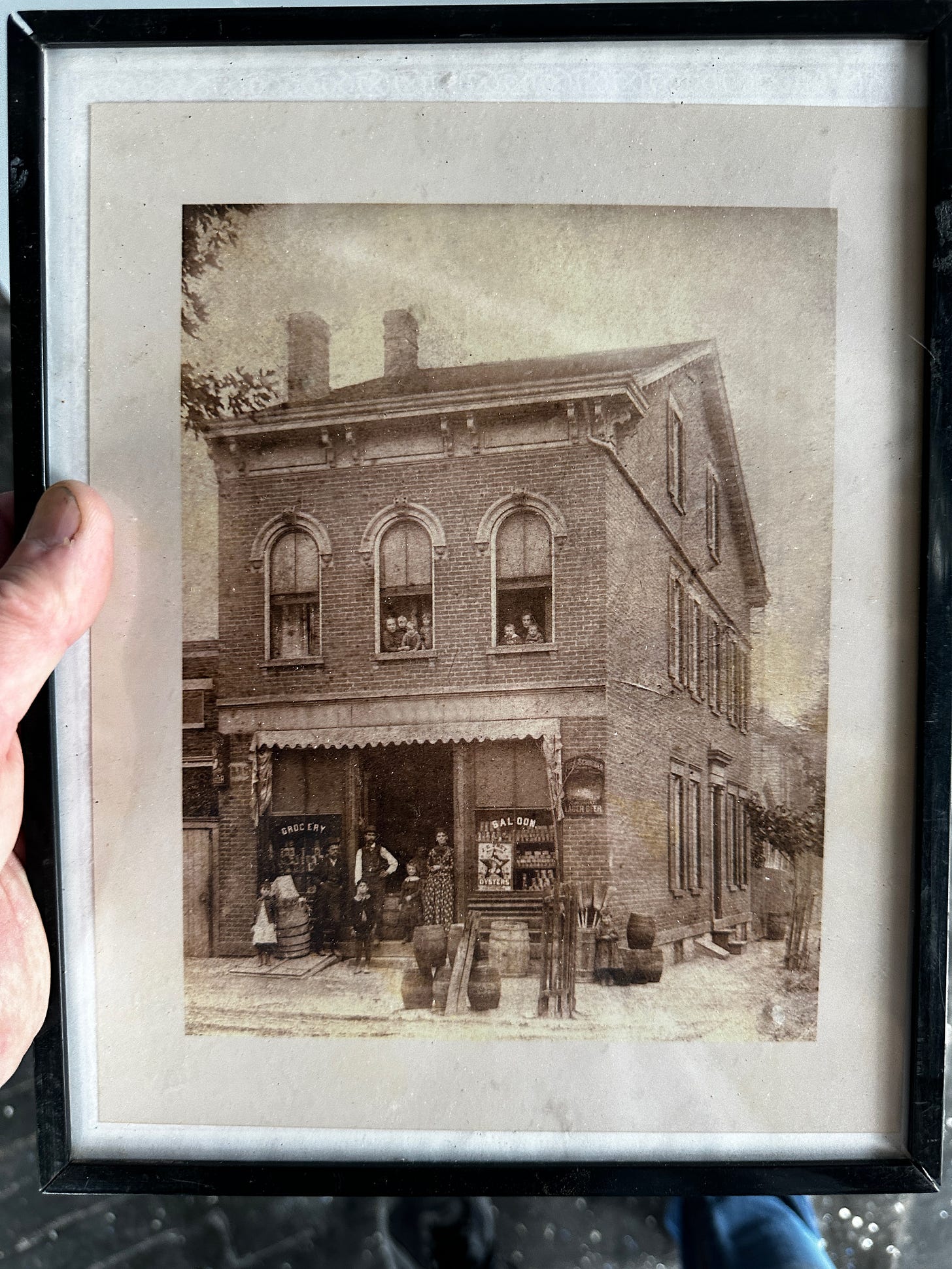Two weeks ago, I toured a property for sale on Greenup Street that was (to my mind) priced inexplicably low. It was a commercial storefront with living quarters above. Detached garage. In decent shape. And in a tree-lined Covington neighborhood filled with outstanding 19th-century architecture.
Price: $219,000.1
It seemed stupid not to buy it. The Greenup Street property was in better shape than our place on Willard Street back when we bought it in 2015. And compared to the Anthe building (our warehouse), this $219,000 property was a bacon-plated Ritz-Carlton.
I spent the next two days thinking about the property for sale. It would be nice to use it to expand our offices and manufacturing. The upstairs could be used as apartments for instructors, visiting authors or students. On initial glance, the place needed only about $100,000 of work to upgrade the bathrooms (which were in pretty good shape) and complete a kitchen on the first floor that was plumbed and electrified.
I thought: We could easily afford to do this project.2
Then I remembered that our workshop’s thickness planer and jointer needed lubrication. Plus, we have a small but nagging leak in the machine room. And I still haven’t finished designing the pergola for the biergarten that (with some vines) will provide shade for us in summer. Uhhhhh, our master bathroom still sports a 1980s swingers’ hot tub (in black and gold, baby). And the list of planned updates at the Anthe Building is too long to list here.
This was a hitch in my git-a-long.
So I raised the idea of buying this building with John (the other half of Lost Art Press), and I explained my big caveats.
Despite my misgivings, John was open-minded about buying the place on Greenup Street. So we had a long conversation about its pros and cons.
In the end, he said: Do what you want.
So, I sat down and looked at the inventory at our warehouse. Then I spent a couple hours counting pallets of books there. Finally, we all figured out how to clear space on the second floor for offices, and how to make space on the first floor for retail and tool assembly.
The price of this project? About $20,000 for HVAC and electrical. Plus, no new insurance, taxes, internet, maintenance or extra picking up of poop at the back door.
Whew.
When you run a small- or medium-sized business, it’s easy to take on more than you should. In fact, it’s the thing I worry about the most. I have at least a dozen ideas for new products during a month. About 93 percent of them are unwise. If I manage to pick the one idea that isn’t complete junk, there’s still a good chance that it will require so much effort that the rest of our business will suffer.
Why in the world am I telling you this stuff? There are a couple lessons here.
Lesson 1: More “X” doesn’t solve most problems. Let’s say you have four smoothing planes, there’s a good chance that three of them are not working perfectly. Getting another smoothing plane isn’t the solution. If you have a set of 12 chisels, about half of them likely need sharpening. More chisels isn’t the answer. If you have a complete set of hollows and rounds, one of two things is possible:
Keep reading with a 7-day free trial
Subscribe to The American Peasant to keep reading this post and get 7 days of free access to the full post archives.


